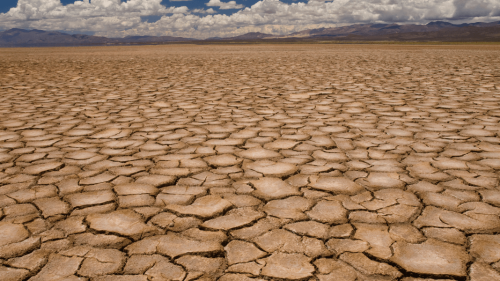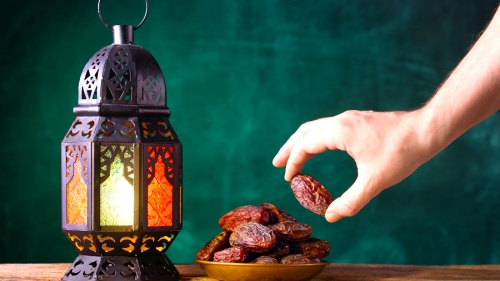The Environmental Price of Packaging

What do eggs, online deliveries, lipstick, and medicine all have in common? They are all kept safe by packaging! Packaging is found absolutely everywhere, and though it is important, not all of its effects are positive. It’s time to untape the box, pull back the layers of tissue paper, take out the packing peanuts, and dive into the world of packaging.
The Environmental Protection Agency (EPA) reports that in 2018, packaging and containers made up 28.1% of all municipal solid waste (MSW). MSW is everything that we get rid of, including both garbage and recycling. Once packaging material is disposed of, it travels one of four paths: it can go to the landfill, be recycled, be combusted for energy, or escapes the waste management system and gets into the environment. Combusting materials for energy creates electricity but also generates ash, which is taken to landfills.
According to the EPA, in 2018, 9.8 million tons of glass were generated specifically for packaging. To put that into context, that is the equivalent weight of 65,334 blue whales. Of that glass, 31.3% was recycled, 13.4% was combusted for energy, and 55.4% went to landfills. Though glass can be endlessly recycled, recycling rates in the U.S. are low, as glass is often contaminated by food waste and other non-recyclable items. Additionally, glass needs to be sorted by color (due to variations in melting points) to be recycled. Any glass that breaks and can no longer be sorted or ends up at a recycling facility that does not recycle glass goes straight to the landfill.
Steel and aluminum are also common packaging materials. Most steel packaging comes from canned foods, and aluminum is in everything from the pull-tab seal on a bottle of ketchup to the silver foil covering chocolate. According to the EPA, paper and paperboard are also heavy hitters in the world of packaging and containers, making up 14.3% of all MSW in the U.S. in 2018. The EPA notes that corrugated boxes specifically were “the largest single product category of MSW in 2018” and were responsible for 11.4% of MSW.
Wood is another common packaging material primarily found in pallets and crates and used in international trade. Though wood packaging can be converted into wood chips or mulch, the bulk still ends up in landfills.
Plastic is also a popular packaging material. Despite its bad reputation, plastic does have a few environmental benefits. Because of its light weight, transporting plastic requires less fuel than transporting other heavier packaging materials. Plastic also helps keep food fresh, reducing food waste. Still, there are significant drawbacks. A 2016 World Economic Forum report found that though 14% of plastic packaging is recycled, only 5% makes it through sorting and reprocessing. Of the plastic recycled, most is converted into low-value materials that cannot be recycled again.
The World Economic Forum report also noted that each year, 32% of plastic packaging ends up outside the waste management system. According to the report, each year at least eight million tons of plastic are leaked into the ocean, and the majority of that is packaging. The report explains that this is “equivalent to dumping the contents of one garbage truck into the ocean per minute” and is expected to increase “to two [trucks] per minute by 2030 and four per minute by 2050.” The report notes that the plastic isn’t just floating in the ocean, harming wildlife, tourism, and fishing and shipping industries: it is also leaching 225,000 tons of additives each year. As water filters through the gills of fish, these leached chemicals enter their bodies and are later absorbed by animals up the food chain who eat them, which includes humans.
The world of packaging can seem bleak, with the landfill being the final resting place of most materials, but that is changing both on large and small scales. Amazon has set up a “Frustration-Free Packaging Program” that encourages vendors to use minimal packaging, and small businesses are making similar changes. Last month, I was thrilled to see the prints I ordered from an independent artist were packaged in compostable mailers, as were the seeds I bought from a small garden business.
Most of the advances in packaging are not technology-based but rather changes in how companies have addressed their packaging. For example, Dove now makes all of its plastic bottles in North America and Europe from recycled material. Though recycled plastic is not new, it is innovative to use it exclusively. Another example is the brand Häagen-Dazs® providing ice cream in steel containers that can be returned and refilled, reducing the use of single-use ice cream packaging. Steel containers are nothing new, but using them for ice cream is.
Etsy, a platform that hosts the shops of independent creators, has also included packaging improvements in its sustainability efforts. Through Etsy’s “Planet-Friendly Packaging” program, packaging made from recycled materials is available for sellers to purchase. Allbirds is another company working to make its packaging greener. It focuses on using recycled cardboard certified by the Forest Stewardship Council (FSC®) for its packaging. Most recycled cardboard comes with no way to verify if it is genuinely recycled. The FSC certification helps Allbirds ensure the material it uses is 100% recycled material.
This shift in packaging is largely due to consumers. According to IBM’s 2020 Research Insights report, “[n]early six in 10 consumers surveyed are willing to change their shopping habits to reduce environmental impact. Nearly eight in 10 respondents indicate sustainability is important for them. And for those who say it is very/extremely important, over 70 percent would pay a premium of 35 percent, on average, for brands that are sustainable and environmentally responsible.” However, it is important to recognize that not all consumers have the ability to pay a premium for sustainability. Though consumers with more financial flexibility may be picking up the cost of greener products, low-income communities are the ones truly paying the price of packaging waste. Most landfills are built in low-income neighborhoods, and low-income communities are far more likely to be hurt by the detrimental effects of pollution than their higher income neighbors.
For Muslim consumers, the choice to shop green is often based in faith: Anas reported Allah's Messenger (Peace Be Upon Him [PBUH]) as saying “Never does a Muslim plant trees or cultivate land and birds or a man or a beast eat out of them but that is a charity on his behalf.”—Sahih Al-Bukhari, Book 10, Hadith 3769. Muslims are encouraged to cultivate a verdant world, not one that is overridden with packaging waste, which is toxic to not only ourselves but also to flora and fauna.
It is important to consider the big picture when deciding if packaging changes are beneficial for the environment. For example, reusable steel containers are heavier than traditional ice cream containers. Does the additional fuel needed to transport them cancel out the environmental benefits of reusable packaging? Is more energy used to create traditional ice cream containers or steel ones? How much energy goes into cleaning the reusable containers? Are the cleaning solutions environmentally friendly?
Even technological advancements to packaging should be viewed with a grain of salt. For example, bioplastics (plastics made from renewable sources of biomass, such as food waste and plants) and compostable plastics sound great. Unfortunately, most bioplastics and compostable plastics require an industrial composter to break down and won’t decompose if they find their way into the environment. Additionally, as described by Zoe Cormier in the article “Turning Carbon Emissions into Plastic” from BBC Earth, creating bioplastics often has a greater carbon footprint than creating traditional plastics. Cormier also notes that if a bioplastic is added to your recycling, it may be considered contamination, rendering everything else in the bin unrecyclable. Sadly, I may not have as much of a reason to be excited by the compostable mailers I received as I thought I did.
Though technological advancements must be carefully researched before they are lauded as solutions to sustainable packaging, there are exciting innovations on the horizon. Researchers are developing infrared sensors which can tell different types of plastic apart in order to allow for better sorting and more efficient recycling. Scientists are also working on marine neutral plastics specifically made to break down in marine environments.
The future of packaging may seem bleak. There is no “silver bullet,” and each solution comes with its own drawbacks. Instead, it is important that we look for “silver buckshot”: a variety of solutions, working together from different angles, to make packaging more sustainable. We don’t need to wait for corporations to change their ways or for new technology to be developed. As individuals, we can create a more sustainable future on our own.
Learn the rules of recycling, especially since a single non-recyclable piece of packaging can contaminate an entire recycling bin. Reuse everything you can. If you recycle your glass pasta bottle, chances are it will end up in a landfill; turn it into a pencil holder, vase, container for storing dry goods, or cup for water, and you can prevent that. This also saves you from buying a new pencil holder and all the packaging that comes with it. Also, hold brands accountable, especially when it comes to claims of sustainability. If your local fast food restaurant has switched to compostable take-out salad containers, let them know that this doesn’t actually do much for the earth.
Packaging is convenient, but in 2018 alone, more than 82 million tons of packaging and containers ended up in MSW. That has to change. It is time to unpack our relationship with packaging and open the box to a greener future.
Taskeen Khan has a bachelor's degree in integrative biology and a minor in sustainability, energy, and the environment from the University of Illinois at Urbana-Champaign. She is passionate about science education and communication, as well as research.
Reprinted from the Winter 2021 issue of Halal Consumer Magazine with permission from IFANCA (Islamic Food and Nutrition Council of America) and Halal Consumer Magazine.
Topics: Climate Change, Food, Nature And Environment
Views:945
Related Suggestions

















